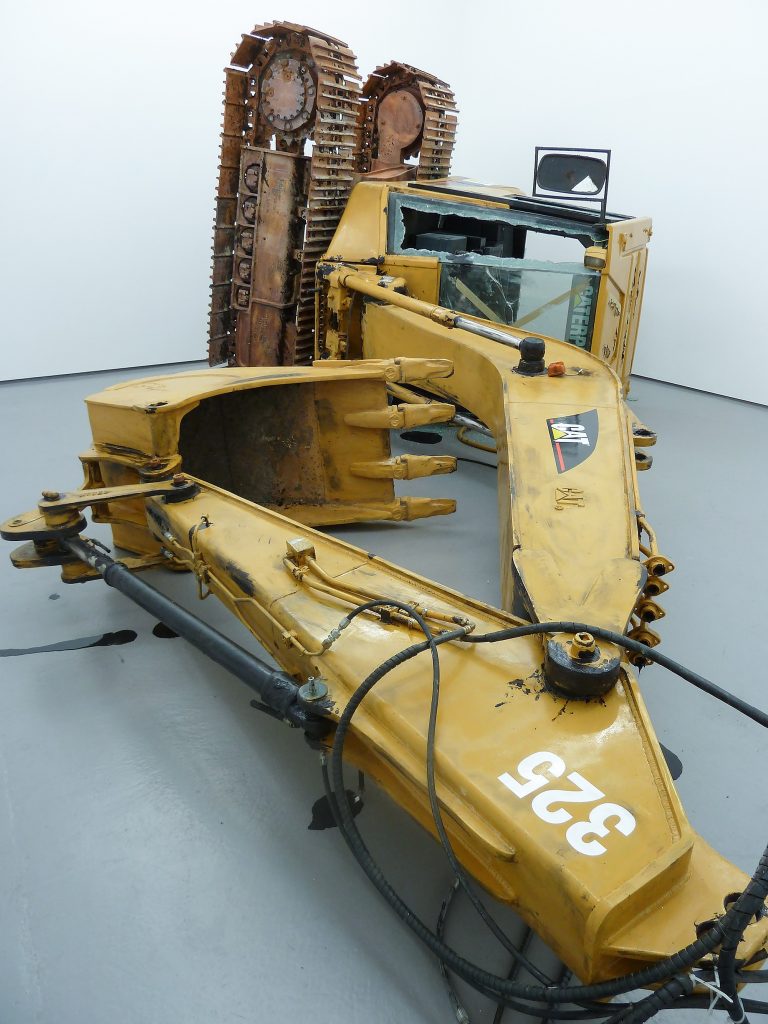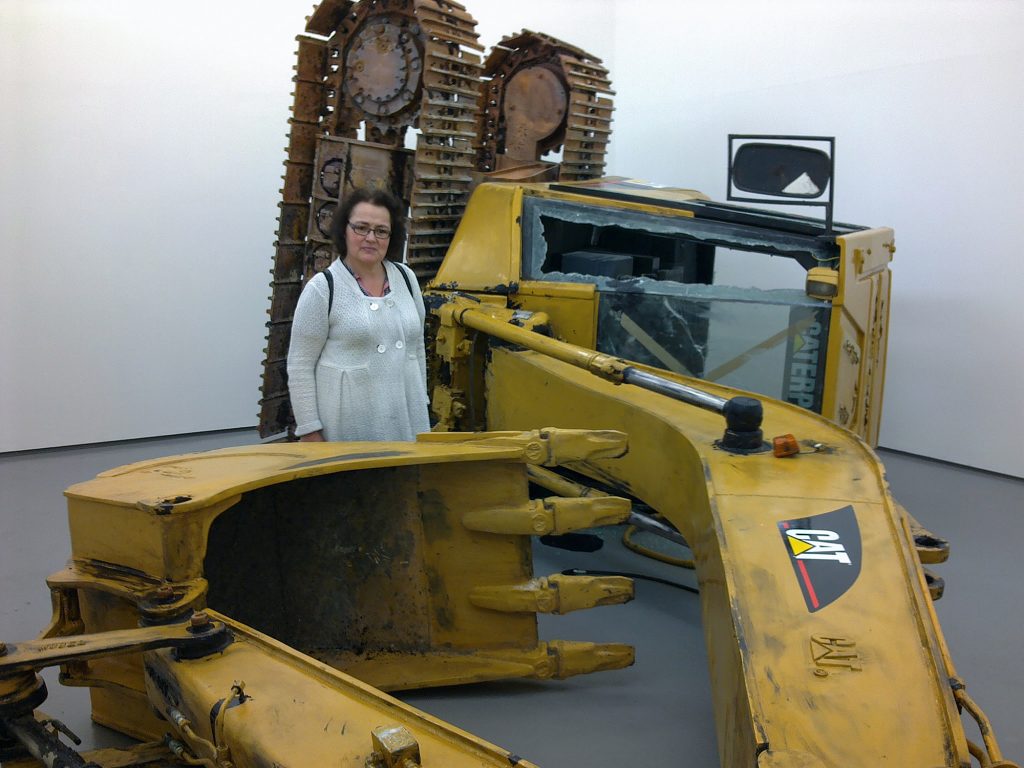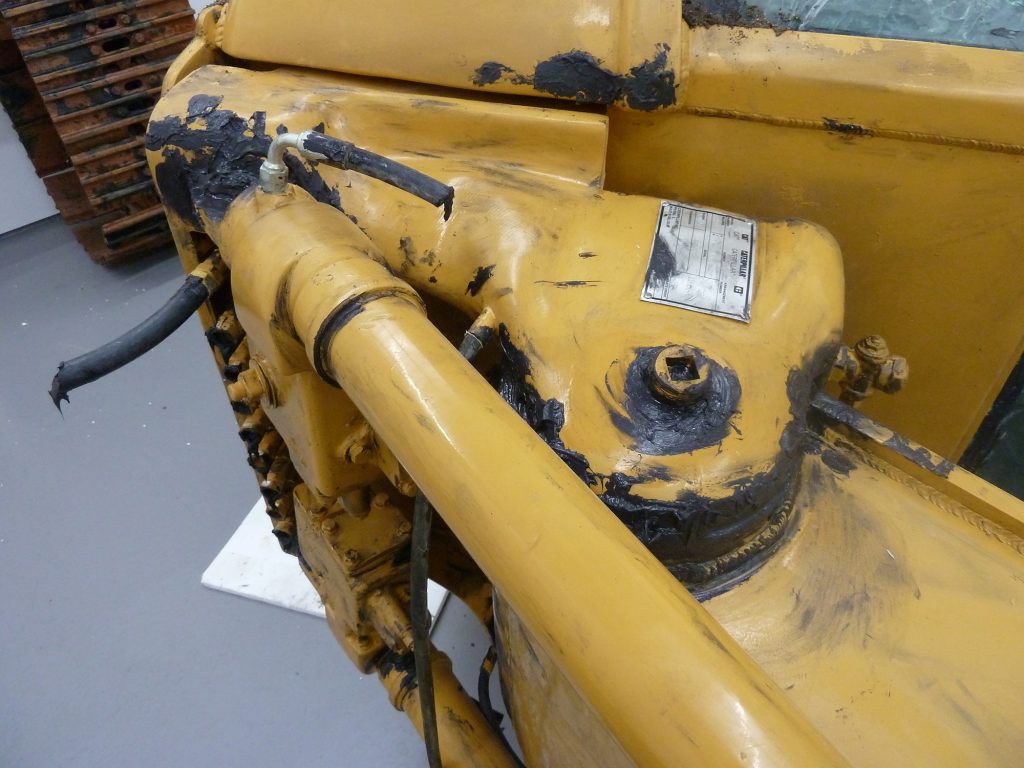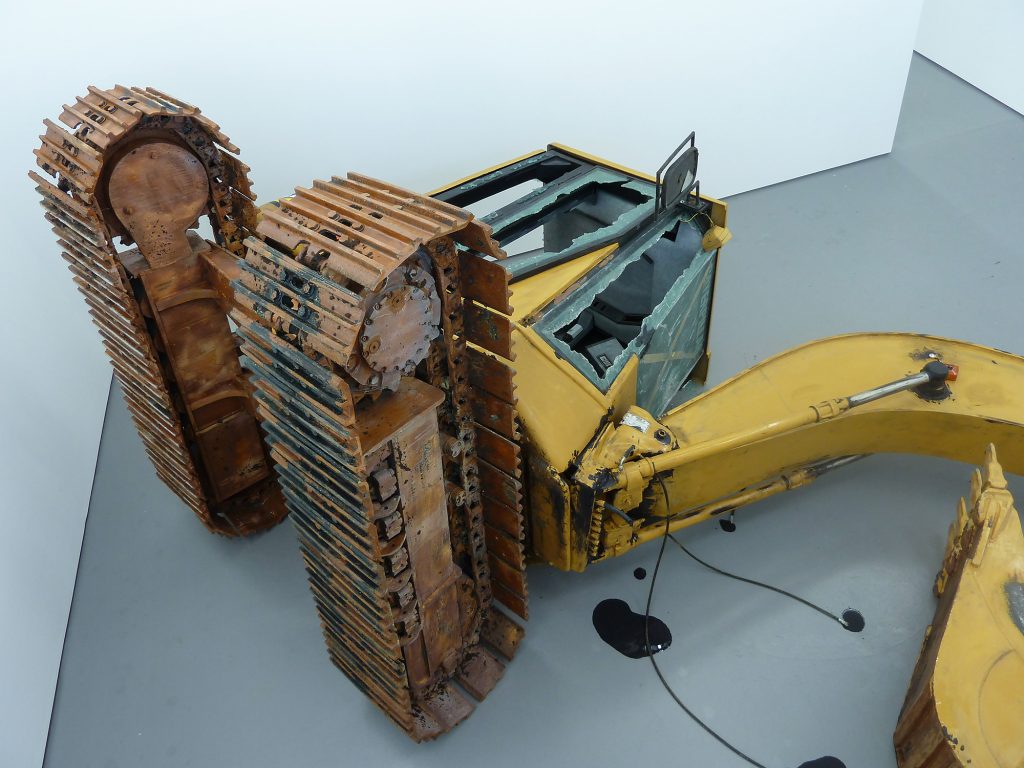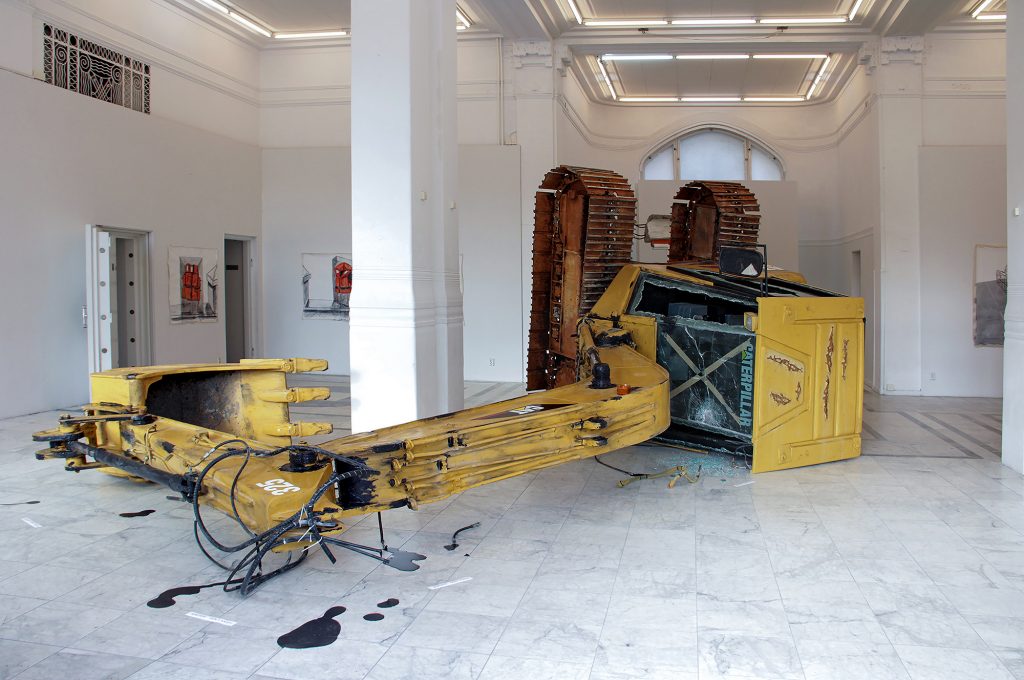Sculpture, 2011
Epoxy, fiberglass, paint, plastic F18, styrofoam and silicone.
Dimensions: 700 x 590 x 210 cm
Image view: Galleri Riis, Oslo, Norway and Örebro konsthall, Örebro, Sweden
The piece proposes the total deconstruction of the urban approach and the objects that surrounds it, adding a new layer to a scene from everyday life.
In an amnesic simulacrum, I invite the spectator to try to forget everything they know about the object and find a new understanding of what they are looking at. I also encourage them to consider alternative functions for the object beyond what it was originally built for.
The piece consists of placing a copy scale 1:1 Caterpillar Excavator. The copy is made with epoxy, fiberglass and plastic. Within the gallery or exhibition space, the Caterpillar lies down on one of its sides, to create the metaphor of being a dead dinosaur.
By introducing this type of machine into a gallery space, I am incorporating elements of everyday life and the public/urban environment into a usually very private and elitist domain, where the object’s reason for existence begins to die. These machines are used to dig, make holes, graves, and craters in the ground. Showing the machine lying down on its side, instead of exhibiting it upright, is meant to illustrate the death of an object while at the same time giving it new life.
It is the death of an image that was taken from the urban environment and then placed in an institution.
My piece is ”a readymade, that has been made”. It is an act of respect and disrespect, construction and deconstruction of art history. When the art piece is located within a gallery or museum, the concept changes because the possible readings are affected by these places, which impose their own narratives through the power of the institution.
These transferred meanings both alter and legitimize the work.
The piece also alludes to the Caterpillar’s contribution to the development of war, the manufacturer having, in 1918, provided one of the first prototypes of a tank.

